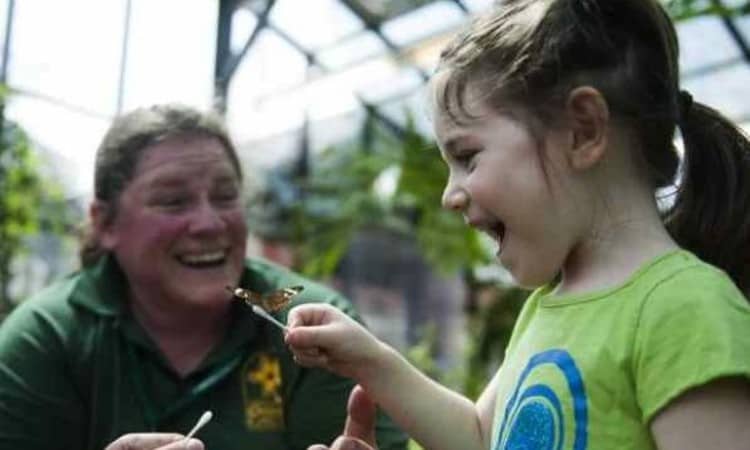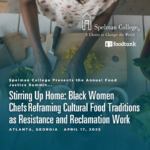Although Mike Devlin was trained as a lawyer, his love for gardening led him down an unexpected career path. Devlin lives and works in Camden City, New Jersey, an impoverished city with a lack of fresh food and safe recreation. As a new resident and ward leader three decades ago, he became involved in community gardening, leading him to realize the important role urban gardens could play in addressing the city’s problems. With help from the William Penn Foundation, the community garden program expanded, and several years later, Devlin went on to start the Camden City Garden Club and the Camden Children’s Garden.
Today these combined programs provide fresh produce to a significant number of people in a food desert with zero supermarkets to its name. In this interview, Devlin, who serves as executive director of the Camden Children’s Garden, talks about the development and success of these comprehensive projects.
Food Tank (FT): What was the impetus for starting Camden Community Gardens and the Camden Children’s Garden?
Mike Devlin (MD): A little over 30 years ago while I was a ward leader, a couple of people wanted to start community gardens in the two neighborhoods that comprised my ward. Gardening was my own personal hobby and an escape from law and politics, and we helped them get city and county land to get those gardens started.
In 1985, the William Penn Foundation, which is still located in Philadelphia, came to Camden to see me. I was a county employee, a city resident, a gardener, and a city-elected ward leader. They wanted to help fund a community garden program, and they offered US$20,000 if someone would write a grant. As a county employee with three others in the elected board running the county and with the city mayor and council’s support, I asked for and received US$30,000, and that’s what started the program. They wanted to see a nonprofit formed, and I donated my time to form one. In the first year, we built a dozen new community gardens around Camden, and we’re now celebrating our thirtieth year of community gardening.
Later, we went to the American Horticultural Society’s Children in Gardening conferences where we started talking to people, which led to building the Camden Children’s Garden. It opened 15 years ago.
FT: How do the Camden Community and Children’s Gardens meet some of the unique needs of the city?
MD: In 2008, when the economy melted down, people in Camden, which is one of the poorest cities per capita in the nation, faced tougher times than most. We’re the worst food desert in New Jersey and one of the nine worst in the country, according to the U.S. Department of Agriculture (USDA). A lot of people started to come to us about starting a community garden to help get fresh food and save on their grocery bills. We went from about 30 community gardens in 2008 to over 130 today; according to the University of Pennsylvania, which is partnering with us on the USDA’s Community Food Project grant, about 15 percent of the population of the city gets some of its fresh produce from our program.
We do a lot of education for the community. We offer about 10,000 discounted or free admissions to Camden children each year. In Camden, there are no movie theaters, very little safe havens for recreation. We have a population of about 75,000 people, and about 50 percent are under the age of 20. Twenty-five percent of our children are born to unwed teenage mothers who won’t graduate high school. Sixty percent drop out of school before getting their high school diploma. We lost our last supermarket last September, so we have no supermarkets in nine square miles for 75,000 people, just corner stores, which sell little or no fresh food.
A lot of people have been separated from fresh food for many years, so we’re always trying to encourage people to try new vegetables and fruits. I believe that if they grow them, they will taste them; they will try to find a use for them because they have developed ownership of that product.
We help people get their gardens started and keep them going. They pay nominal dues of either US$25 a year for a family or US$65 a year for a community organization or church, and then we provide plants, fertilizer, lime, mushroom compost, wood chips, and muscle. We also support Americorps, and we had an Americorps team here through March and April, and we put them out at different sites to either get them started or help them along.
FT: What are the components of the Camden Children’s Garden?
MD: The Children’s Garden is a four-and-a-half acre plot, a dozen exhibits, three amusements, and a year-round indoor butterfly house built by the Philadelphia Eagles football team. It’s a tourist destination and the base of operations for all our programs, including the Community Gardens, Youth Employment Program, the Grow Lab, and Fresh Mobile Market that we put out on the streets of Camden. The train carousel and other rides generate income, and the butterfly house is also an educational center.
FT: How do the Youth Employment Programs work?
MD: Twenty-five years ago, Governor Christie Whitman gave us a grant to hire Camden youth to help build community gardens in the neighborhoods, and that program is still going on. We hire Camden teenagers when they’re 14 or 15 in their early years of high school. We also take some on from the city summer youth program.
A lot of other programs want us to work with them because our success rate is almost 100 percent with kids graduating high school and either getting into college or getting a job after high school. One-third to 40 percent of kids who finish our program graduate high school and enter college. We give them a job, they earn an income, and we take them on field trips. We treat them like family. We’ve only had one kid out of over 300 drop out of high school.
We have them help operate the garden. We have a lot of revenue-earning birthday parties, and the youth learn to host them. They learn about horticulture, and they learn basic job skills. We have strict rules about uniforms, and we provide some guidance, mentoring, and parenting.
If they have some direction, are earning some money, and they’re not getting into trouble but instead learning skills, they can succeed. Nohemi Soria, who’s 28 now, just went with me to Washington two weeks ago to help give the report on our second year. She came to the gardens when she was 14 years old. She stayed here through high school, went to college, graduated college, and came back; now she’s running the USDA community food project.
FT: How does the Grow Lab program work?
MD: Twenty-five years ago, we started an in-school program called Grow Lab, which comes out of the National Gardening Association in Vermont. It’s a K-8 hands-on science and math program using the grow labs and plants. It’s worked right into the classroom; they grow salad in the fall and have a salad party at Christmas, and they usually grow flowers or spring startup vegetables in the wintertime.
We have about 12 to 14 school gardens in Camden, and kids are learning science and math while they’re growing vegetables, or flowers for mom, or plants to put in their school vegetable gardens. They’re also having fun.
FT: What other organizations do you work with?
MD: We work with over 30 churches and faith-based groups and probably another 25 community organizations. We have gardens with the Boat People, the national Vietnamese group, and with Hispanic Family Services and Puerto Rican Unity for Progress.
FT: Where do you go from here?
MD: We want to continue expanding the community garden program because we’re still in very bad straights as a food desert. Right now, there’s less money available for community gardening then there was just a couple years ago. Things are not better; in fact they’re probably worse for two reasons. One, we lost the last supermarket in the city limits, and two, we had the worst winter we’ve ever had this past year. It was the second worst in the amount of snow; nothing survived.
We have about 130 gardens and yet there are about 12,000 abandoned lots in the city, including 4000 city-owned abandoned lots that are there for the taking. We’re seeking funds to help meet the need.













